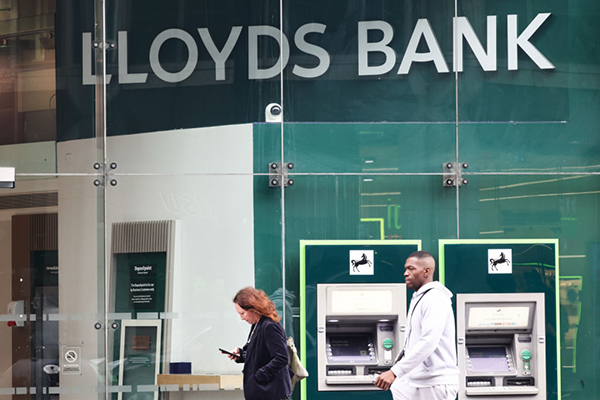Lloyds Bank Q1 profit falls amid tariff caution
Shareholders have had a great year so far, but there are some mixed numbers in the high street lender's quarterly report. ii's head of markets rounds up the results and share price reaction.
1st May 2025 08:31
by Richard Hunter from interactive investor

Some emerging thorns in the side have hampered progress at Lloyds Banking Group (LSE:LLOY), although the underlying financial strength of the lender remains intact.
- Invest with ii: What is a Managed ISA? | Open a Managed ISA | Transfer an ISA
Impairments are the most notable headwind for Lloyds at the moment. While no further provisions were taken this quarter for the remediation of potential motor finance commission arrangement fines, £1.2 billion has already been set aside with the next judgement expected in July. Elsewhere, however, the world has moved on and the global economy is yet to display the full effects of the tariff threats emanating from the US on a regular basis.
As such, Lloyds has set aside a further £309 million in impairments, £100 million of which is attributed to the tariff escalation and its possible effect on bad debts, with a large proportion of the remainder being aimed towards the group’s retail customer base, where UK consumer sentiment is currently fragile. While both sets of provisions may prove prudent in the fullness of time, they inevitably have a short-term impact on profitability.
At the headline level, while the numbers are bang in line with expectations, they are mixed. Net income of £4.39 billion for the quarter represented an increase of 4% on the corresponding period, and was largely driven by an increase in Net Interest Income (NII). Pre-tax profit was 7% lower than the previous year at £1.52 billion mainly due to impairments and slightly higher costs, although more promisingly the number was 84% higher than the previous quarter.
- Barclays demonstrates strength in Q1 numbers
- HSBC beats Q1 forecasts but distractions loom
- UK bank shares: Q1 2025 results review
There was also some positive news in terms of the group’s more traditional business, with growth in both loans and deposits. Loans increased by £7.1 billion to £466,2 billion, £4.8 billion of which came from UK mortgages.
However, there is a note of caution to be found in the group’s economic assumptions buried further in the update, which anticipate sharply lower house prices which could result from the changes to the environment which have just taken place. The customer deposit exodus, which had been in place with higher rates being sought elsewhere, seems to have steadied for the time being, with an increase of £5 billion in deposits to £487.7 billion.
The combination of the metrics has largely been positive. NII increased by 3% to £3.29 billion, with guidance confirmed for the full year at around £13.5 billion. This has reduced some of the pressure on the Net Interest Margin, which rose to 3.03% from a previous 2.95%.
Other key metrics drifted slightly, with the Return on Tangible Equity dipping to 12.6% from 13.3% (although a number of around 13.5% remains the full-year target), the capital cushion or CET1 ratio moving from 13.9% to 13.5% and the cost/income ratio edging up to 58.1% from 57.2% previously. Higher operating expenses resulted from a number of factors, including lease depreciation, inflationary pressures and ongoing growth costs both in terms of investment but also severance payments.
- Stock market winners and losers during Trump’s first 100 days
- The most-popular dividend shares among global fund managers
- Sign up to our free newsletter for investment ideas, latest news and award-winning analysis
Indeed, income generally remains a focus and apart from the growth in its key mortgage lending book, moves into other streams such as Motor Finance, Insurance, Pensions and Investments are bearing fruit. The structural hedge, designed exactly to mitigate the group’s susceptibility to changes in interest rates, should provide a revenue boost of £1.2 billion this year. Meanwhile, specialised growth in sectors such as infrastructure within its Commercial Banking unit also boosts prospects.
For all the progress, the impairment overhang, a potentially challenging UK economic backdrop and the higher valuation attached to the recent share price gain have all contributed to a lukewarm response to the numbers. There could also be an element of profit taking involved, with the shares having risen by 41% over the last year, as compared to a gain of 4.6% for the wider FTSE100, and by 33% in this calendar year alone.
As such, and while Lloyds remains a longer-term play bolstered by the potential for generous shareholder returns, the market consensus of the shares as a hold is reflective of the fact that they're regarded as being up with events for now.
These articles are provided for information purposes only. Occasionally, an opinion about whether to buy or sell a specific investment may be provided by third parties. The content is not intended to be a personal recommendation to buy or sell any financial instrument or product, or to adopt any investment strategy as it is not provided based on an assessment of your investing knowledge and experience, your financial situation or your investment objectives. The value of your investments, and the income derived from them, may go down as well as up. You may not get back all the money that you invest. The investments referred to in this article may not be suitable for all investors, and if in doubt, an investor should seek advice from a qualified investment adviser.
Full performance can be found on the company or index summary page on the interactive investor website. Simply click on the company's or index name highlighted in the article.